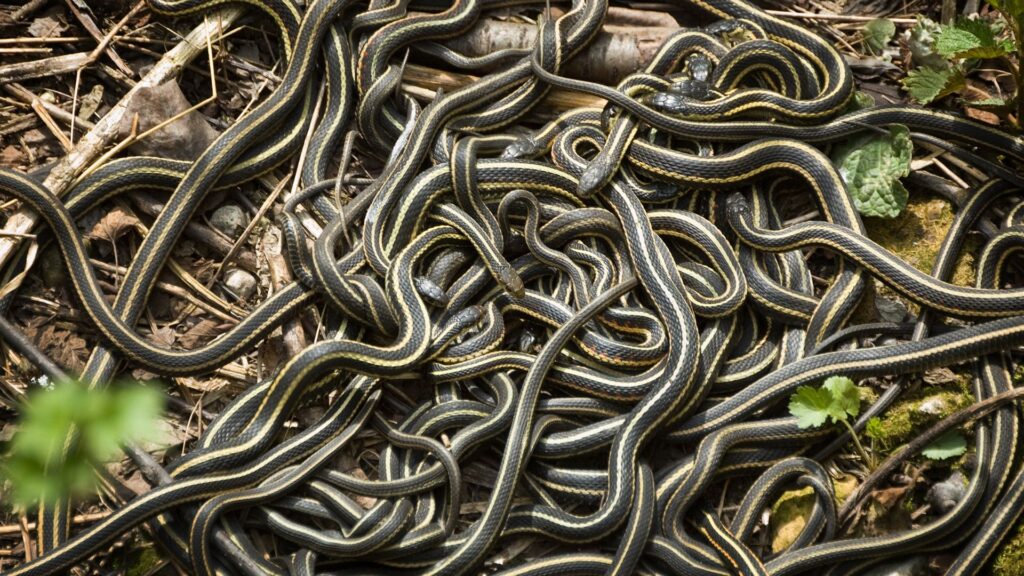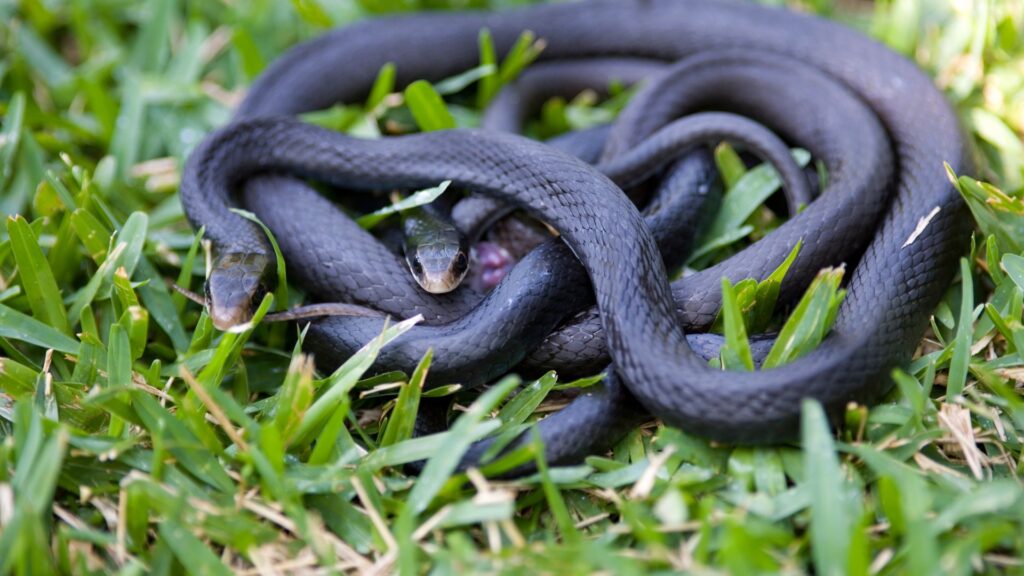The fascinating world of snakes is here! When it comes to snake breeding, people live with many myths and misconceptions. Snakes are fascinating creatures that have been around for millions of years. They are one of the most common reptiles present around, but still, a lot about them is unknown. Especially what confuses people the most is “Whether snakes can crossbreed, inbreed, or interbreed”?
Well, Snakes have their unique ways of reproducing, just like any other living organism. Depending upon the species, Snakes can interbreed, inbreed, and crossbreed, producing viable offspring. Some species of Snakes can, in fact, produce offspring through parthenogenesis (without the need for a male). However, for some species, breeding can be very limited.
In the past few decades, Snake breeding has become insanely popular. Specially breeding for enhancing specific traits and creating new color morphs has got a heavy boast. New discoveries are being made every day.
Therefore, anything related to Snake breeding often excites people. Whether you are a herpetologist, a snake enthusiast, or someone who is simply curious, you have landed at the right place. Join us with this Comprehensive understanding of Snake Breeding.
Contents
- Do Two Male Snakes Mate?
- How Do Snakes Reproduce? Parthenogenesis In Snakes
- Can Snakes Inbreed? Is It Safe?
- Inbreeding Snakes- Risks and Potential Complications
- Can Snakes Mate With Themselves? Can Some Snakes Reproduce Asexually?
- Crossbreeding- Can Snakes Crossbreed?
- Can King Snakes Cross Breed?
- Are Hybrid Snakes Poisonous?
- Snake Reproduce Sexually Or Asexually?
- Can Snakes Mate With Other Animals?
- Can You Breed A Python With A Boa?
- Mating Balls in Snakes- Do All Snakes Form Mating Balls?
- Can You Have 2 Snakes Together?
- Wrapping up…
Do Two Male Snakes Mate?
No, two male snakes, due to the same gender and similar organs, cannot mate. As they are both males, none of them possess the necessary reproductive organs.
For reproduction in snakes, it is important for a male and a female to mate. When the male transfers his sperm to the female, she then fertilizes her eggs internally.
However, sometimes male snakes may engage in mating behavior with each other. This behavior is termed as mounting or combat, but it cannot result in reproduction.
How Do Snakes Reproduce? Parthenogenesis In Snakes
Snakes reproduce sexually, just like many other living organisms. In order to produce offspring, snakes need both a male and a female to mate. Male snakes have hemipenes, their reproductive organ, which is inside the base of their tail.
As a male snake mate, he will use his hemipenes to transfer sperm into the female’s cloaca. In female snakes, the cloaca is an excretory opening and a reproductive organ. As a male snake transfer sperm into a female body, she further fertilizes the eggs inside, later laying them and incubating them until they hatch into babies.
However, the process of snake reproduction varies from species to species. Some snakes who are oviparous lay eggs, whereas others who are viviparous give birth to live young. In fact, some snake species exhibit a mix of both reproductive strategies, hatching eggs and giving birth to live snakes.
Snake reproduction is a complex and interesting process overall. However, there’s much more to it.
Some snake species reproduce through a process called parthenogenesis, a form of asexual reproduction. Within this process of reproduction, a female snake produces offspring needing to mate with a male snake. The process involves unfertilized eggs developing into the embryo of a female snake and then a viable offspring.

Snake species like boas, pythons, and pit vipers do reproduce through parthenogenesis, whereas, in other snakes, the process is actually rare. Offspring produced through the process of parthenogenesis are usually genetically identical to the mother.
These offspring do not exhibit the genetic diversity that usually is common in the ones that come from sexual reproduction. Due to a lack of genetic diversity, such snakes are extremely vulnerable to environmental changes and disease.
Can Snakes Inbreed? Is It Safe?
Yes, Snakes can definitely inbreed like any other living organism. Inbreeding in snakes is basically the mating of closely related snakes such as siblings or parent-offspring.
However, inbreeding in snakes or any other organism can negatively affect the health and fitness of the coming offspring.
It can even increase the possibility of inheriting harmful genetic mutations. In snakes, inbreeding can result in increased susceptibility to disease and parasites. In addition, inbreeding can also leave snakes with physical deformities and reduced growth rates.
To avoid the consequences of inbreeding, keeping track of snake lineage is crucial. Breeders should avoid breeding closely related individuals, for instance, siblings, parent-child, etc. It is important to breed unrelated snakes to maintain genetic diversity and produce healthier offspring.
Doing so also produce offsprings with stronger immune systems. However, if you are still considering inbreeding snakes, it is important to understand the risks and potential complications first.
Inbreeding Snakes- Risks and Potential Complications
- Increased likelihood of genetic mutations.
- Reduced genetic diversity and risk of inherited genetic disorders.
- Increased susceptibility to disease and parasites.
- Physical deformities include spinal deformities, kinks, and other skeletal abnormalities.
- Reduced reproductive success.
Can Snakes Mate With Themselves? Can Some Snakes Reproduce Asexually?
No, snakes cannot mate with themselves; for reproduction, a male and female snake is necessary. However, with the process of parthenogenesis, some species of (female) snakes are capable of reproducing without needing a male.
The process of parthenogenesis involves asexual reproduction where an egg develops into offspring without requiring fertilization from sperm. The process of parthenogenesis also allows snakes to reproduce asexually.

Crossbreeding- Can Snakes Crossbreed?
Generally, snakes are not known to crossbreed easily. It is, in fact, very rare for some snake species to hybridize successfully. It happens because a majority of snake species have specific mating behaviors.
Their preferences are why they are limited to their own species. In addition, some snakes typically have different numbers of chromosomes and even different mating seasons. This condition also limits their potential for crossbreeding.
However, some documented cases of hybridization between certain species of snakes are present there. Hybridization in captivity where different species can be housed together, was performed. However, such offspring can possess a wide range of physical and behavioral traits. Some of these traits can be undesirable or sometimes even harmful.
In addition, hybridization may even have ecological and evolutionary consequences. For instance, loss of genetic diversity within each population. Therefore, it is usually advised to avoid crossbreeding snakes unless there is a specific purpose. Similar is the case with Interbreeding snakes.
Can King Snakes Cross Breed?
Well, King Snakes are known for their ability to crossbreed or interbreed with other snake species of the same genus. This process of crossbreeding is often referred to as hybridization.
Some common species of King Snakes who involve in hybridization include the desert kingsnake (Lampropeltis splendida) and California kingsnake (Lampropeltis getula californiae). Their produce offspring in captivity (controlled environment), and their hybrids are known as ‘Desert kings’ and ‘Cali-kings.’
Are Hybrid Snakes Poisonous?
The toxicity, Poison quotient, and Venom production of any snake are determined by its genetic makeup, which is often inherited from its parent species. However, there isn’t enough evidence to support that Hybrid snakes are more poisonous than non-hybrid snakes.
Hybrid snakes, however, can have a combination of speed and aggression. Or they may be able to camouflage, making them a more effective predator. Regardless of whether they are hybrid, it is important to treat all snakes with precaution.
Snake Reproduce Sexually Or Asexually?
Snakes can reproduce sexually and asexually both. Their sexual reproduction process is similar to any other living being.
However, their asexual reproduction process is termed parthenogenesis which is very rare. Asexual reproduction amongst snakes is more likely observed in captive populations.
Or some species, like boa constrictors and copperheads, are even known to reproduce asexually in wild conditions. Asexual reproduction is also a survival strategy in snakes though it can result in reduced genetic diversity within a population.
Can Snakes Mate With Other Animals?
Some animal species are capable of interbreeding with closely related species; snakes aren’t one of them. Snakes, by no chance, can mate with other animals. It is because snakes have evolved specific reproductive mechanisms.
Their mating behaviors and reproductive organs are highly specialized and adapted to their species. Only animals like horses and donkeys and wolves and coyotes can interbreed.
And even if snakes were capable of doing so, it would have been very unlikely for them to produce viable offspring.
Can You Breed A Python With A Boa?
No, both Python and Boa are different genera of snakes, and they aren’t related enough to interbreed. While both snake species are constrictor snakes, there are differences in their genetic makeup, and they have different numbers of chromosomes.
This makes it impossible for both species to interbreed. And in case they do, the offspring would likely be infertile. Or in some cases, both species will not be able to produce offspring of their own.
Mating Balls in Snakes- Do All Snakes Form Mating Balls?
Mating Balls is a behavior observed in some species of snakes specially oviparous. This behavior involves multiple male snakes competing for the opportunity to mate with a single female of the species.
Multiple snakes will simultaneously attempt to mate with the female. This process results in a tangling mass of writhing bodies.
The behavior is often observed in snake species with a high male-to-female ratio. The process of observing a mating ball can be quite dramatic.
However, not all species of snakes form mating balls.
Can You Have 2 Snakes Together?
Keeping two snakes together depends upon their species and some additional factors. For instances. Snake species that are solitary cannot be housed with other snakes. Whereas there are some snake species that can be housed in pairs or in small groups given the conditions are right.
Solitary snake species that are aggressive and territorial include Rattlesnakes, King snakes, Milk snakes, Burmese pythons, Ball pythons, and Green tree pythons. These species cannot be kept together under any circumstances. In contrast, snake species that are known to coexist include Corn snakes, Garter snakes, and Rat snakes.
Before keeping two or multiple snakes together, it is crucial to research whether both species go together. Also, it is important to provide the reptiles with large enough enclosures, adequate hiding places, and other environmental enrichment.
Wrapping up…
Overall, Snakes have their unique ways of reproducing, name it crossbreeding, inbreeding, or interbreeding. They can involve in a type of breeding depending upon the species. While inbreeding is a common practice amongst these reptiles inbreeding and crossbreeding can have negative consequences.
